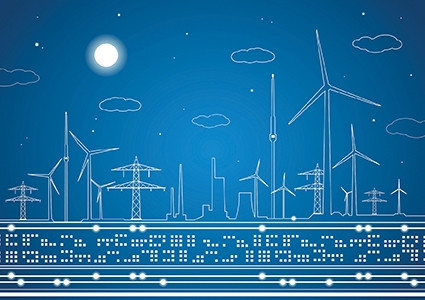Electricity Market Watch
Sector research is one of the key directions of Galt & Taggart Research. We currently provide coverage of Energy, Healthcare, Tourism, Agriculture, Wine, and Real Estate sectors in Georgia. As part of our energy sector coverage, we produce a monthly Electricity Market Watch, adapted here for Georgia Today’s readers. Previous reports on the sector can be found on Galt & Taggart’s website - gtresearch.ge.
Installed capacity additions and forecast
Power plants commissioned over the last two years have increased total installed capacity of Georgia by 10.0% to 4,104.9 MW. 2016-2017 additions have included 12 hydro (352.7 MW) and one wind (20.7MW) power plants. Three large HPPs – Dariali (108MW), Khelvachauri (47.5MW), and Shuakhevi (178.7MW) – account for 89.5% of the aforementioned capacity increase. After several months in test regime, Khelvachauri HPP reached its normal generation capacity in April 2017, while Shuakhevi HPP, the largest HPP constructed in Georgia in the last 50 years, is expected to reach the planned level of generation only after October 2017. According to the 2017 forecast, these three HPPs will produce 0.5 TWh of electricity in 2017 and satisfy 4.2% of annual consumption (11.9TWh).
Total installed capacity of Georgia will increase by 13.8% by 2020, if projects at construction stages are completed on schedule. 35 HPPs with 337.2MW of installed capacity are at the construction stage to be commissioned by end-2020. Their timely completion will result in 1,586.0 GWh of additional hydro generation annually. In addition to the HPPs at the construction stage, the pipeline includes over a hundred projects at the feasibility stage, as well as a second GOGC-owned CCGT project (230MW) in Gardabani, to be completed by 2020, and designed to satisfy electricity demand during winter deficits.
Energo-Pro Georgia was rated by Fitch Ratings
Energo-Pro Georgia, the largest electricity distribution company in the country, was rated "BB.” Fitch Ratings has assigned JSC Energo-Pro Georgia (EPG) an Expected Long-Term Foreign Currency Issuer Default Rating (IDR) of 'BB(EXP)' with Stable Outlook. The rating is based on expected cash flows and market situation for the next three years. GNERC’s regulatory methodology, whereby tariffs are revised every three years, and the upward revision of the WACC from 13.54% to 16.4% as of January 2018, positively affect the ratings. Capital expenditures are expected to average GEL 66.0mn over 2017-2021.
Electricity consumption and generation: September 2017
Domestic consumption increased 16.3% y/y in September 2017 and 9.0% y/y in 9M17. Consumption by eligible consumers, up 91.1% y/y, was one of the key drivers, as usage by Georgian Manganese increased 149.7% y/y and contributed 7.6 percentage points to overall growth in September 2017.
Consumption of distribution companies, up 13.0% y/y, was an even larger contributor (10.1 ppts). Consumption by Energo-Pro Georgia subscribers, including former Kakheti Energy Distribution subscribers, increased 13.2% y/y, while Telasi consumption was up 12.5% y/y. The Abkhazian region’s electricity usage was down 8.2% y/y and accounted for 11.0% of domestic consumption.
Domestic generation increased 2.8% y/y, with HPP generation up 10.4% y/y (74.1% of total). Deregulated HPPs posted an 11.7% y/y increase in generation, due to the addition of Dariali, Khelvachauri, and Shuakhevi HPPs. Generation by Enguri/Vardnili was up significantly (35.4% y/y) and accounted for 44.5% of total supply, while generation of other regulated HPPs declined 22.8% y/y in September 2017.
Thermal generation decreased 32.4% y/y (11.2% of total) from the low base in 2016, while the new wind power plant accounted for 0.7% of total electricity supply. The guaranteed capacity fee was down 24.0% y/y to USc 0.6/kWh, as Mtkvari Energy and G-Power were under maintenance for most of the month.
Electricity imports and transit
Electricity import increased 5.5 times y/y to 132.9 GWh and accounted for 13.9% of total electricity supplied to the grid in September 2017. Notably, the level of import was only 0.7% above the plan. The main source of import (60.6%) was Azerbaijan, with the rest coming from Russia.
Electricity transit through Georgia declined 68.6% y/y to 31.9GWh in September 2017 and 63.9% y/y in 9M17. Transit from Azerbaijan to Turkey remains the main direction, accounting for 59.1% of electricity transited in September 2017 and 74.2% in 9M17; the rest was directed from Russia to Armenia. Electricity exports in September 2017 were negligible.
Electricity prices in Georgia and Turkey
Wholesale market prices in Georgia increased 9.6% y/y to USc 4.8/kWh. Electricity traded through the market operator accounted for 23.7% of total electricity supplied to the grid in September 2017, with the rest traded through bilateral contracts. Average import price decreased slightly to USc 4.8/kWh. Turkish electricity prices increased 7.5% y/y to USc 5.3/kWh, 10.9% above the Georgian wholesale market price.
Mariam Chakhvashvili











